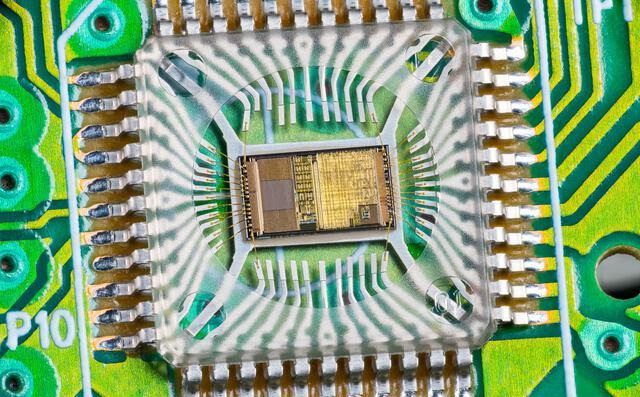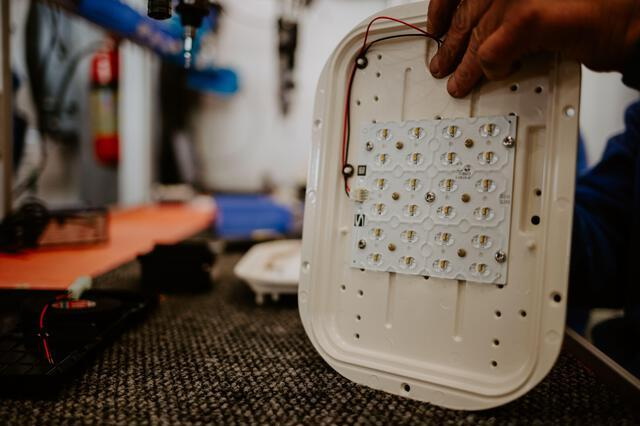Content Menu
● Understanding SMT and Its Importance
>> Step 1: Assess Production Requirements
>> Step 2: Selecting Equipment
>> Step 3: Designing the Layout
>> Step 4: Setting Up the Line
>> Step 5: Testing and Calibration
>> Step 6: Maintenance and Continuous Improvement
● Best Practices for Optimizing Your SMT Line
● Common Challenges in SMT Assembly
● Conclusion
● FAQ
>> 1. What are the key components of an SMT line?
>> 2. How can I optimize my SMT line layout?
>> 3. What is the importance of calibration in an SMT line?
>> 4. How often should I perform maintenance on my SMT equipment?
>> 5. What role does training play in SMT line efficiency?
● Citations:
Setting up a successful Surface Mount Technology (SMT) line is a multifaceted process that requires careful planning, execution, and continuous improvement. SMT has transformed the electronics manufacturing landscape by enabling faster and more efficient assembly of electronic components. This article will explore the essential steps involved in establishing an SMT line, from initial planning to ongoing maintenance.

Understanding SMT and Its Importance
Surface Mount Technology (SMT) is a method for producing electronic circuits where components are mounted directly onto the surface of printed circuit boards (PCBs). This technique offers several advantages over traditional through-hole technology, including:
- Higher Component Density: SMT allows for smaller components to be used, enabling more compact designs.
- Improved Performance: Shorter lead lengths reduce inductance and resistance, enhancing electrical performance.
- Automated Assembly: SMT is highly compatible with automation, increasing production speed and reducing labor costs.
Given these benefits, setting up an efficient SMT line is crucial for any electronics manufacturer looking to compete in today's market.
Step 1: Assess Production Requirements
Before diving into the setup process, it is essential to assess your production requirements. This involves:
- Determining Production Volume: Understand how many units you need to produce per day or week.
- Identifying Component Types: List the types of components you will be using, as this will influence equipment selection.
- Evaluating Assembly Complexity: Consider the complexity of your assemblies, which can affect machine capabilities and layout design.
This initial assessment will guide your decisions regarding equipment selection and line configuration.
Step 2: Selecting Equipment
Choosing the right equipment is vital for the efficiency of your SMT line. Key machines include:
- Pick-and-Place Machines: These machines accurately place components onto the PCB. When selecting pick-and-place machines, consider factors such as speed, accuracy, and the types of components they can handle.
- Solder Paste Printers: Essential for applying solder paste to PCB pads before component placement. The accuracy and consistency of the solder paste application are crucial for the quality of the final product. Choose a printer that offers precise control and easy setup.
- Reflow Ovens: Used for melting solder paste and creating reliable solder joints. The oven must provide uniform heating to ensure proper soldering. Consider the size, heating zones, and temperature control capabilities when selecting a reflow oven.
- Inspection Systems: Automated Optical Inspection (AOI) systems help ensure quality by detecting defects in real-time. Investing in inspection tools is critical for maintaining high-quality standards throughout the production process.
When selecting equipment, ensure compatibility with your components and PCBs. Additionally, consider factors such as speed, precision, and ease of maintenance.
Step 3: Designing the Layout
An efficient layout is crucial for maximizing productivity. Considerations include:
- Workflow Optimization: Arrange machines in a logical sequence to facilitate smooth material flow. For example, position the solder paste printer at the start of the line, followed by pick-and-place machines, reflow ovens, and inspection systems.
- Space Management: Ensure adequate spacing between machines for maintenance and operator movement. This not only improves efficiency but also enhances safety within the workspace.
- Future Expansion: Design the layout with future growth in mind. Leave space for additional machines or processes as needed.
A well-designed layout minimizes bottlenecks and enhances overall efficiency.
Step 4: Setting Up the Line
Once planning is complete, it's time to set up the SMT line:
1. Install Equipment: Follow manufacturer instructions for each piece of equipment.
2. Configure Software: Modern SMT machines come with sophisticated software. Configure settings such as component libraries and placement coordinates.
3. Integrate Systems: Ensure seamless communication between machines to streamline operations. This may involve setting up network connections and configuring data exchange protocols.

Step 5: Testing and Calibration
After setup, rigorous testing and calibration are necessary:
- Conduct Initial Tests: Run test boards through the line to verify functionality.
- Calibrate Equipment: Regularly calibrate machines according to manufacturer recommendations to maintain precision. Calibration ensures that machines operate accurately, leading to better quality control and reduced errors during assembly.
Fine-tune settings based on test results to optimize performance.
Step 6: Maintenance and Continuous Improvement
Ongoing maintenance is crucial for long-term success:
- Regular Maintenance Schedule: Implement a schedule for cleaning, lubrication, and parts replacement to prevent unexpected downtime.
- Performance Monitoring: Use data from inspection systems to identify trends and potential issues. Continuous improvement is essential in a competitive environment; regularly seek feedback from operators and incorporate new technologies or methodologies as needed.
Best Practices for Optimizing Your SMT Line
To enhance efficiency further, consider implementing best practices such as:
- Lean Manufacturing Principles: Focus on reducing waste and optimizing workflows through techniques like value stream mapping and 5S (Sort, Set in order, Shine, Standardize, Sustain).
- Training Programs: Invest in training for operators to ensure they are skilled in using equipment effectively. Skilled operators are essential for maintaining high production quality and minimizing downtime.
- Supplier Relationships: Maintain strong partnerships with suppliers for timely delivery of high-quality materials. This ensures that your production line runs smoothly without interruptions due to material shortages.
These practices contribute significantly to the overall success of your SMT line.
Common Challenges in SMT Assembly
Despite careful planning and execution, several challenges may arise during SMT assembly:
- Solder Bridging: Excess solder can create bridges between adjacent pads leading to short circuits. To mitigate this risk, ensure proper stencil design and solder paste application techniques are followed[6][9].
- Insufficient Solder Joints: This can occur due to insufficient solder paste applied during printing or improper reflow profiles. Regular checks on solder paste thickness can help prevent this issue[10][13].
- Component Misalignment: Components that are not correctly aligned can lead to defective assemblies. Regular calibration of pick-and-place machines can help maintain alignment accuracy[3][16].
Addressing these challenges proactively through rigorous testing protocols can enhance yield rates significantly.
Conclusion
Setting up a successful SMT line involves careful planning, strategic equipment selection, precise execution, and ongoing maintenance. By following these steps and implementing best practices while being aware of common challenges faced during assembly processes, manufacturers can achieve high efficiency and quality in their production processes. As technology continues to evolve, staying informed about industry advancements will be crucial for maintaining competitiveness in the fast-paced electronics market.

FAQ
1. What are the key components of an SMT line?
The key components include solder paste printers, pick-and-place machines, reflow ovens, inspection systems (like AOI), and handling equipment.
2. How can I optimize my SMT line layout?
Optimize your layout by ensuring logical sequencing of machines, adequate spacing for maintenance, and implementing safety protocols.
3. What is the importance of calibration in an SMT line?
Calibration ensures that machines operate accurately leading to better quality control and reduced errors during assembly processes.
4. How often should I perform maintenance on my SMT equipment?
Regular maintenance should be scheduled based on manufacturer recommendations but typically includes daily checks along with more extensive monthly or quarterly servicing.
5. What role does training play in SMT line efficiency?
Training ensures that operators are skilled in using machinery effectively which reduces errors and enhances overall production efficiency.
Citations:
[1] https://www.smtfactory.com/Expert-Guidance-for-SMT-Production-Line-Setup-id42117676.html
[2] https://www.smtfactory.com/Essential-Steps-for-SMT-Production-Line-Setup-id49117676.html
[3] https://www.viasion.com/blog/common-challenges-in-smt-assembly-and-solutions/
[4] https://www.gssmt-parts.com/how-to-set-up-an-smt-production-line-efficiently.html
[5] https://alimco.in/WriteReadData/UserFiles/file/Specification3MR3.pdf
[6] https://www.vse.com/blog/2022/03/15/8-common-smt-placement-issues-and-solutions/
[7] https://faroads.com/start-smt-line-guide-2024/
[8] https://ventureoutsource.com/contract-manufacturing/setting-up-electronics-manufacturing-smt-pcb-assembly-lines/
[9] https://jhdpcb.com/blog/efficient-smt-assembly/
[10] https://fctassembly.wordpress.com/technical-resources/technical-papers/smt-assembly-challenges-and-proven-solutions-for-improving-yields/
[11] https://resources.altium.com/p/complete-guide-diy-smt-assembly-your-office
[12] https://www.linkedin.com/pulse/how-complete-your-smt-pcb-assembly-9-detailed-instructions-echo-lee-9uobc
[13] https://www.protoexpress.com/blog/common-errors-surface-mount-technology-smt/
[14] https://www.linkedin.com/pulse/essential-practices-long-lived-smt-lines-hawker-richardson
[15] https://www.macdermidalpha.com/sites/default/files/2021-09/ALPHA%20SMT%20Troubleshooting%20Guide%20EN%2001Jun20%20BR_0.pdf
[16] https://www.gssmt-parts.com/what-are-the-common-challenges-in-smt-line-assembly.html
[17] https://smt.asmpt.com/en/news-center/press/minimizing-process-risks-in-smt-production/
[18] https://blogs.sw.siemens.com/valor-dfm-solutions/how-to-optimize-pcb-design-for-the-smt-assembly-process-flow/
[19] https://www.smtfactory.com/Perfecting-Your-SMT-Line-Layout-for-Efficiency-id47017676.html




















